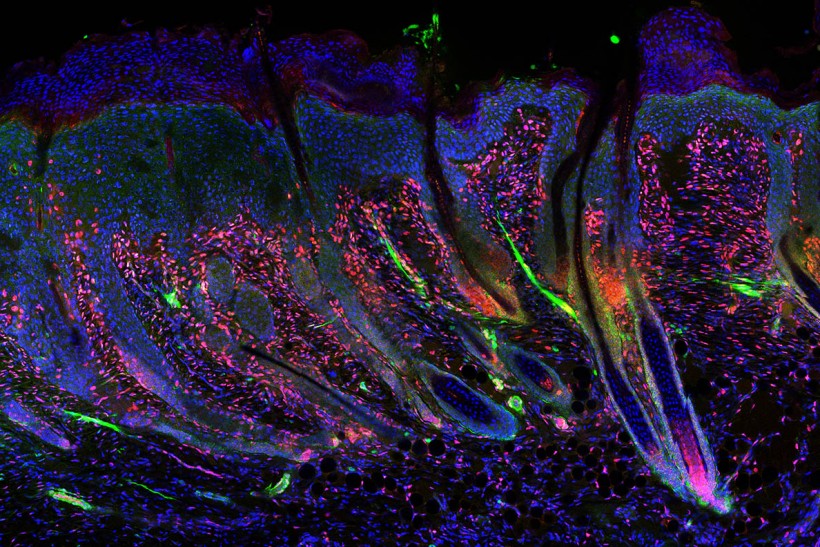Understanding how the skin repairs itself instead of scarring in a healing process is important for clinical and cosmetic applications. In a recent study, scientists discovered a genetic factor that allows adult skin to regenerate, similar to a newborn baby's.
The study by Washington State University was published in the journal eLife. Studying skin regeneration can help burn victims and patients with skin conditions.
One characteristic "of scars is the absence of hair follicles, indicating that their regeneration in a wound may be a critical step in achieving scar-less skin repair," wrote the authors. For their research, the team used mice models to identify a genetic factor in fibroblasts that control hair follicle formation in baby mice during its first week of life. Fibroblasts are cells in connective tissue that play an essential role in skin repair.
Skin Repair in Babies Vs. Adults
They observed that after skin forms in the early stages of development, the switch is turned off and remains that way into adulthood. The team genetically isolated the switch and applied to adult mice fibroblasts, which resulted in skin repair without scarring. The new skin even grew hair follicles and goosebumps.
Professor Ryan Driskell said that they were able to take the neonatal skin's ability to regenerate and transfer the process to adult skin. In principle, he explained, this method of regeneration is possible.
Unlike other animals such as lizards that can regenerate their skin and regrow their limbs, mammals do not have similar regenerative abilities. The team believes that the stages of early development contain the secret to human regeneration.
Driskell said that although the ability of other organisms serves as an inspiration, there is much to learn about human regeneration "by looking at ourselves." He explained that once in our lifetimes, as we grow, we generate new tissue.
To isolate the genetic factor or switch that triggers the formation of hair follicles, the team used single-cell RNA sequencing to compare genes and cells between early development and adult skin. During early development, there are specific proteins that switch genes on or off.
RELATED: Fabricated Electronic Skin Perceive Pain Like Humans, Paving Way for Prosthetics and Robotics

Genetic Switch
The specific switch they discovered is called Lef1, which is associated with fibroblasts in the papillary dermis or the smooth layer of skin below the surface. Activating Lef1 in adult mice skin mimicked the ability of baby mice to heal without scarring while growing new follicles.
Driskell was inspired by the work of Dr. Michael Longaker of Stanford University, who performed emergency surgery in utero. Longaker observed that after birth, the babies had no scars from the surgery.
Driskell shared that they still have a lot of research to do before their methods can be applied to human skin. The authors believe that since the quality of papillary dermis deteriorates starting at the age of 50, affecting the ability of skin regeneration, Lef1 "has the potential to enhance wound healing in humans."
READ: Skin Study Looks at How Wounds Heal and How Drugs Help
Check out more news and information on Dermatology on Science Times.














